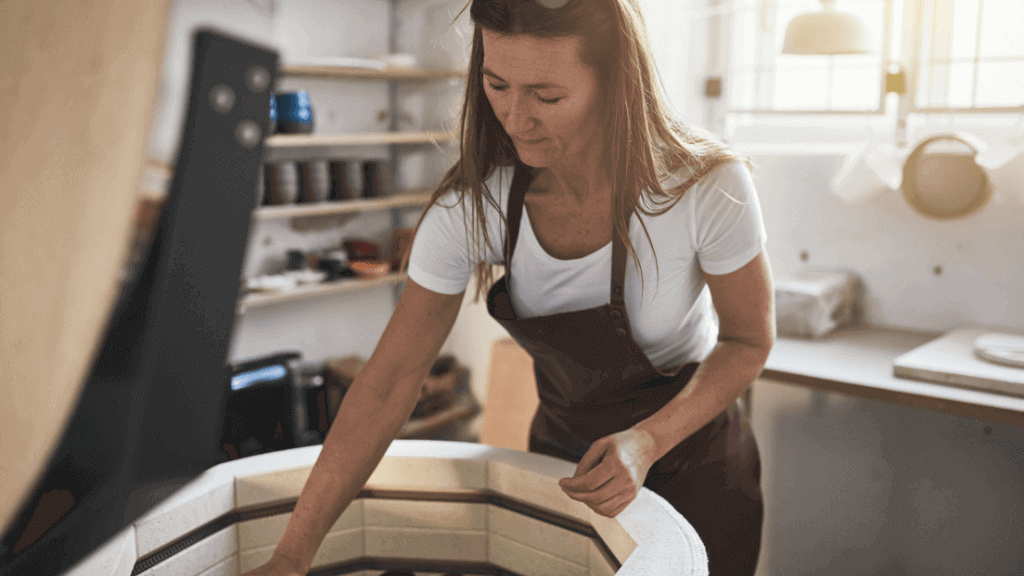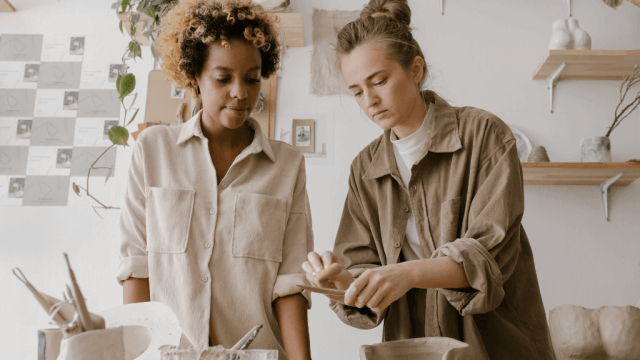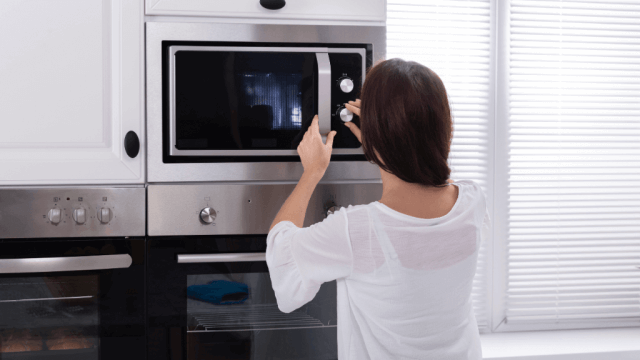To build a pottery kiln, follow these steps: 1) Choose a suitable location and kiln type (electric, gas, or wood-fired) based on your needs and resources. 2) Construct a suitable kiln structure with proper insulation using firebricks, ceramic fiber, or kiln shelves. 3) Install a temperature control system (e.g., pyrometer, kiln sitter) and ventilation system to ensure a consistent firing atmosphere. 4) Set up the heating elements or fuel source, ensuring proper heat distribution for the desired kiln size. 5) Test the kiln to ensure its functionality, safety, and efficiency.
Step 1: Choose the Location and Kiln Type
Before building your pottery kiln, determine a suitable location based on available space, ventilation, and access to power or fuel resources. Choose the type of kiln that meets your needs: electric, gas, or wood-fired.
Step 2: Construct the Kiln Structure
- Select Construction Materials – Pick proper insulation materials for your pottery kiln, such as firebricks, insulating firebricks, ceramic fiber boards, or expandable vermiculite.
- Kiln Design – Design your kiln with the desired dimensions: oval, rectangular, or cylindrical. Plan the entrance and chimney areas, considering the kiln size.
- Kiln Assembly – Assemble the kiln structure, stacking and securing the bricks or insulation layers. Include cavities for heating elements or fuel placement.
Step 3: Install Temperature Control and Ventilation
- Temperature Monitoring Systems – Choose a suitable temperature control system, such as a pyrometer or kiln sitter, and install it within the kiln structure to ensure accurate temperature monitoring.
- Kiln Ventilation – Set up a proper ventilation system to maintain clean air, prevent overheating, and control atmospheric conditions inside the kiln. This may involve vents, chimneys, or an external venting system.
Step 4: Set Up Heating Elements or Fuel Source
- Electric Kiln – For an electric kiln, install heating elements at the specified locations in the kiln design, and connect them to a power source and temperature control system.
- Gas or Wood-Fired Kiln – For gas or wood-fired kilns, design and construct the fuel storage chamber and air supply systems, ensuring proper fuel-air mixture and heat distribution.
Step 5: Test Your Pottery Kiln
Test the functionality, safety, and efficiency of your newly built pottery kiln by running a test firing with ceramic cones or temperature monitoring devices. Make any necessary adjustments as needed to optimize the kiln’s performance.
Step 6: Maintaining Your Pottery Kiln
Regularly inspect the kiln for signs of wear or damage, especially in the heating elements and insulation materials. Addressing issues early can prolong the life of your kiln and ensure high-quality results during firings.
Step 7: Firing Techniques and Safety Precautions
- Firing Techniques – Familiarize yourself with pottery firing techniques, such as bisque firing, glaze firing, and different atmospheric firings like oxidation and reduction. This knowledge will enable you to achieve the desired results with your pottery pieces.
- Safety Precautions – When operating your pottery kiln, prioritize safety by adhering to these precautions: use heat-resistant gloves, keep combustible materials away from the kiln, ensure proper ventilation, and never leave a firing kiln unattended.
Step 8: Kiln Efficiency and Energy Saving
- Preheating the Kiln – Achieve better efficiency by preheating your kiln to slowly reach the desired temperature. This process allows for even heat distribution and can extend the life of your kiln components.
- Energy Saving Practices – Implement energy-saving practices such as firing in full loads, insulating the kiln properly, and utilizing residual heat for lower temperature firings. These practices not only save energy but also reduce operating costs.
FAQ about Building a Pottery Kiln
If you’re considering building a pottery kiln, these frequently asked questions may help provide clarity for common concerns and address additional aspects of building and operating a pottery kiln.
How much does it cost to build a pottery kiln?
The cost of building a pottery kiln varies depending on factors such as size, kiln type, construction materials, and heating elements. On average, building a small-scale kiln can cost between $500 to $2,000, whereas large-scale, professional kilns can cost upwards of $10,000.
Can I build a pottery kiln in a residential area?
Building a pottery kiln in a residential area is possible, but it’s important to consider local zoning regulations, fire codes, and neighbor considerations. Additionally, ensure your kiln is installed with proper ventilation, insulation, and safety precautions to minimize any potential hazards.
What is the best type of pottery kiln for a beginner?
For a beginner, an electric kiln is often the best option, as it is easier to control, maintain, and requires less supervision. Electric kilns are suitable for most home studios and provide consistent and reliable results.
How long does it typically take to fire pottery in a kiln?
The firing time for pottery in a kiln depends on factors such as the type of clay, kiln size, and desired firing temperature. A typical bisque firing can take around eight to ten hours, followed by a glaze firing, which can take another six to eight hours. Cooling times will also vary depending on the size and insulation of the kiln.
How can I make my pottery kiln more energy efficient?
To make your pottery kiln more energy efficient, consider the following: insulating the kiln with high-quality materials, firing in full loads instead of small batches, utilizing residual heat for lower temperature firings, and opting for a well-designed venting system that reduces heat loss.











